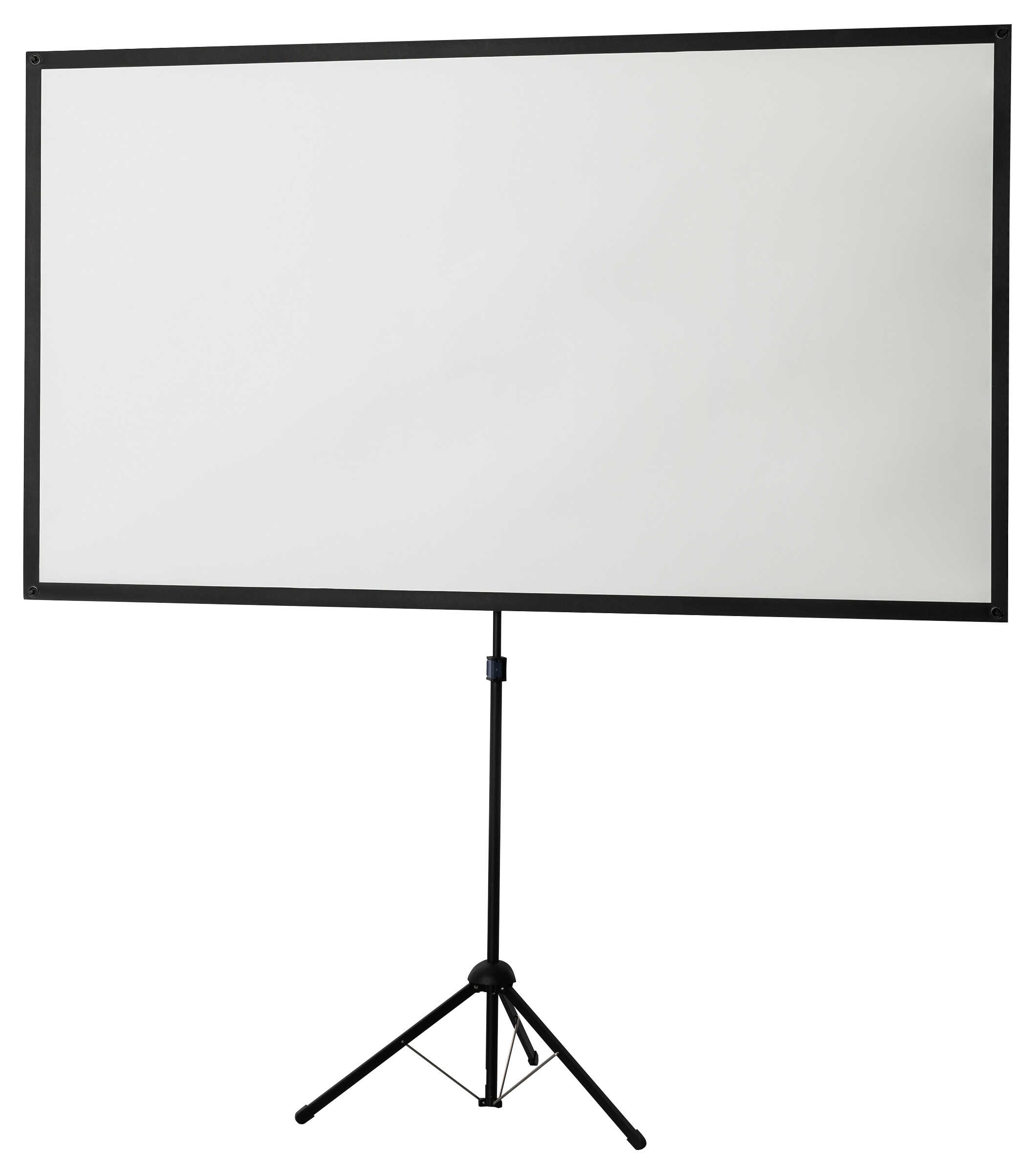Free shipping




























£84.99*
Prices incl. VAT.
3-5 working days In stock. Ready for immediate dispatch. Delivery Time 3-5 working days
Free shipping Product number: 1091745
- Screen type Mobile, Tripod
- Technology Front projection
- Aspect Ratio 16:10
- Gain factor 1.2


visunext Services
Product information
The Ultra Light-weight tripod screen is height-adjustable. The fabric is supplied in a plastic sleeve and for extra protection, a robust protective shipping tube. The tripod legs fold away and fit comfortable with the screen fabric in the carry case provided.
The Ultra Light-weight celexon tripod screen is designed for mobile applications. Whilst not in use it boasts a very small pack size and light carrying weight. When assembled, the robust tripod legs, fibreglass fabric and 1.2 Gain factor combine to create an optimum projection experience.
Key Information:
- 194 x 121 cm viewing area
- Format 16:10
- Fiberglass fabric with 1.2 gain at 120 ° viewing angle
- Including tripod foot and height-adjustable rod for holding the screen
- 4 rods with spring system hold the projection surface
- Assemble & disassemble in less than 3 minutes without tools
- Distance from floor to bottom edge min/max = 41.5/95 cm
- Radius of tripod feet = 37 cm
- Incl. black softcase to protect against environmental influences during transport / storage
- Extremely portable - less than 5kg in packed condition
Technical data
| Name | celexon Tripod screen Ultra Light-weight 194 x 121cm |
|---|---|
| Article number | 1091745 |
| GTIN/EAN | 4260094737190 |
| Manufacturer SKU | 1091745 |
| Model name | 1091745 |
| Projection Distance | Long Throw , Short Throw |
| Brand | celexon |
| Product Type | Projection screen |
| Product Series | celexon Tripod Ultra-lightweight |
| Screen type | Mobile , Tripod |
| Technology | Front projection |
| Screen fabric | matt white fibre |
| Aspect Ratio | 16:10 |
| Viewable Area - Width | 194 cm |
| Viewable Area - Height | 121 cm |
| Black border - Top | 3.5 cm |
| Black borders - Left/Right | 3 cm |
| Black border - bottom | 3.5 cm |
| Gain factor | 1.2 |
| Viewing angle - Horizontal | 120° |
| Features | Black backing |
| Product width | 135 cm |
| Product height | 19.5 cm |
| Product depth | 13 cm |
| Weight | 4.7 kg |
| Colour | Black |
| Condition | New |
| Warranty | 24 Month |
| Warranty type | Bringin service Service and support information |
Product safety
| Person responsible for the EU |
|---|
| celexon Europe GmbH |
| Gutenbergstraße 2 |
| 48282 Emsdetten |
| Germany |
| info@celexon.de |



